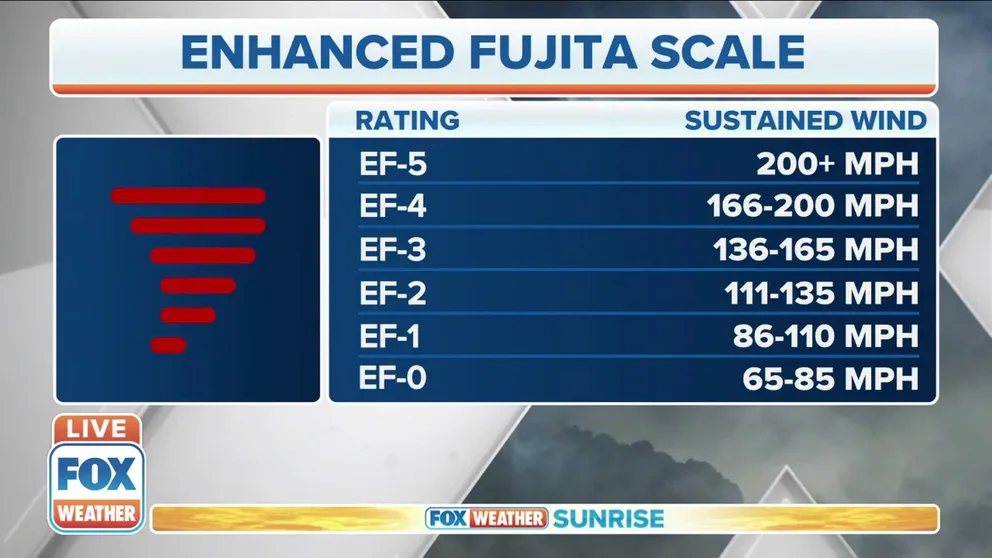How Ted Fujita became a force of nature in tornado science
From bombs to tornadoes, Tetsuya “Ted" Fujita helped us understand some of the world’s greatest disasters.
FOX Weather Explains: The EF tornado scale
FOX Weather meteorologists Jason Frazer and Britta Merwin explain the EF tornado scale.
Since 1971, every tornado has been measured by the F (and later EF) Scale, which determines the intensity and damage caused by tornadoes.
The namesake for the F Scale is Tetsuya "Ted" Fujita, a Japanese immigrant to the United States, who took the field of meteorology by storm.
The origin story
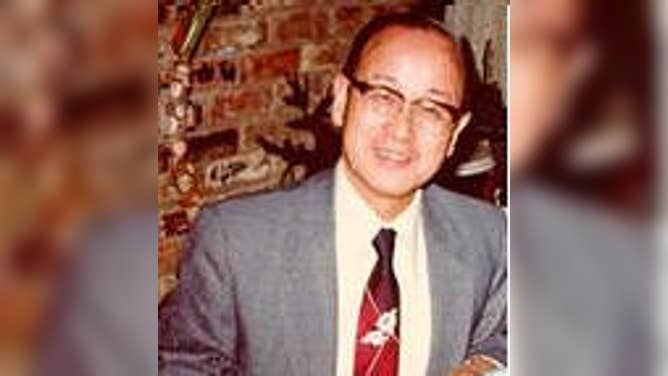
Tetsuya "Ted" Fujita
(National Weather Service / FOX Weather)
Fujita was born on Oct. 23, 1920, in Kitakyushu City, Japan. His hometown rests at about the halfway point between Hiroshima and Nagasaki, a location and proximity that would later play a role in his story.
Fujita was a child of nature — and quite a brave one.
According to his book "Memoirs of Effort to Unlock the Mystery of Severe Storms during the 50 Years, 1942-1992," a young Fujita visited volcanoes as they erupted and navigated fast-rising tides to explore a nearby island. During his teen years, he took an interest in storms, says the University of Chicago.
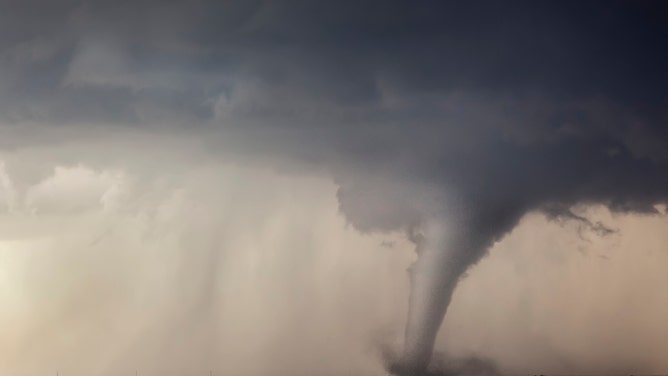
A stove pipe tornado cuts its way through a field in Minneola, Kansas, 24 May 2016.
(Jason Weingart / Future Publishing / Getty Images)
He later took an interest in geography by mapping overhangs and cliffs and then set his sights on more stellar exploits by sketching and tracking sunspots. For his work, his school awarded him with their first RIKA-SHO (Science Award) when he was 18 years old.
The child of nature became a man of science.
He went on to attend Meiji College of Technology (now called Kyushu Institute of Technology) in his hometown of Kitakyushu. There, he received a bachelor’s degree in mechanical engineering in 1943 and then became an assistant physics professor in 1944.
Fujita and the Fat Man
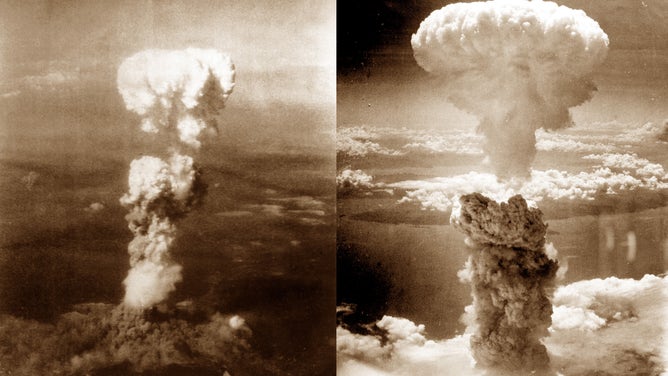
World War II, Atomic bomb mushroom clouds over Hiroshima (left) and Nagasaki (right), August 1945, Japan.
(Universal History Archive / Universal Images Group / Getty Images)
While Fujita was in college, a storm was brewing — World War II.
The year after he graduated, the Japanese Navy had him conduct research on aircraft positions. It was during this time that he "became very interested in the meteorological aspect of the global atmosphere," says Fujita in his memoir.
The war came to an end that following year in 1945, after the U.S. dropped the atomic bomb "Little Boy" on Hiroshima on Aug. 6 and then a second bomb called "Fat Man" on Nagasaki on Aug. 9. In the aftermath, Fujita joined an effort by his college to assess the devastation.
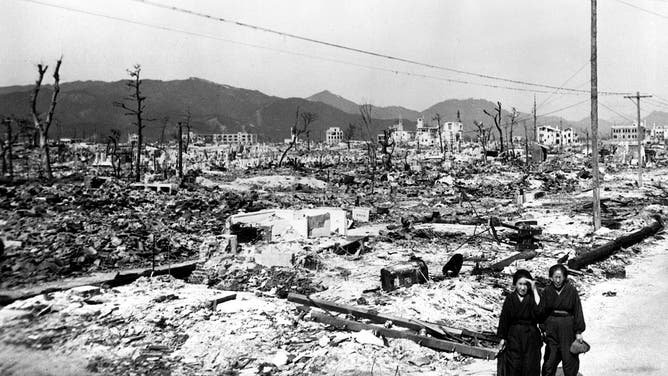
Desolation and dilapidated structures in Hiroshima following the atomic bombing of Japan, 1945.
(Smith Collection / Gado / Getty Images)
Fujita implemented the techniques he used when determining aircraft positions for the Navy and studied the shapes and locations of burn marks from the bombs. In doing so, Fujita was able to accurately calculate the positions at which the bombs exploded.
During the decades of peacetime that ensued, Fujita would take his investigative techniques and apply it to disasters, not made of man, but of nature.
Weatherman
After WWII, Fujita combined his interests in meteorology and physics in pursuit of a doctorate of science degree (ScD) from Tokyo University. He published a number of papers covering topics such as typhoons, anticyclones and cold fronts.
His research as a graduate student caught the attention of Horace R. Byers, the Chairman of the University of Chicago’s Department of Meteorology at the time. Byers invited Fujita to join his university’s meteorology department, along with a U.S. Weather Bureau project under Byers’s direction: the Thunderstorm Project.
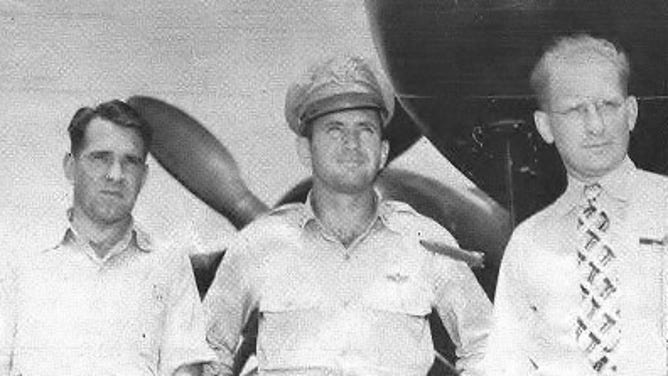
Horace Byers (right) with the Weather Bureau's Ferguson Hall (left) and the Air Force's Lt. Col. Lewis Meng. The men were part of the Thunderstorm Project.
(National Weather Service)
According to the National Oceanic and Atmospheric Association (NOAA), the Project was "the first weather research study in which radar/airplanes had a central role, proving that radar could be used to detect the most dangerous parts of storms and help airplanes avoid them".
After Fujita received his doctorate in 1953, he left Japan for the United States, where he directed his attention to tornadoes — weather events that would eventually take Fujita’s name.
Becoming "Mr. Tornado"
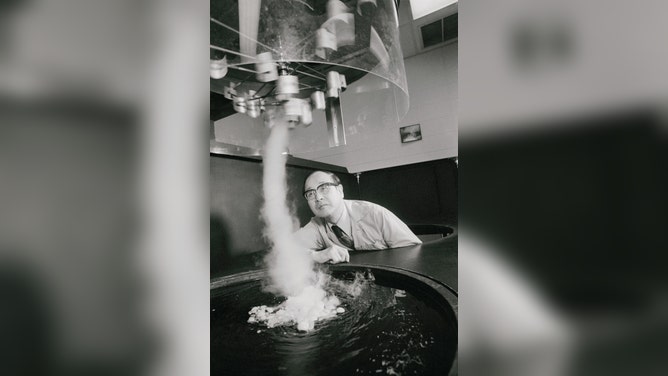
Fujita works in his lab with a special tornado simulator.
(Bettmann / Getty Images)
As Fujita implemented investigative techniques to study the damage caused by the atomic bombs, he also implemented them to study the damage caused by tornadoes.
He combined traditional meteorological methods of studying tornadoes, such as taking into account factors like winds and temperatures, with a forensic approach akin to what he employed at Hiroshima and Nagasaki. For instance, he studied the marks tornadoes left behind on wheat fields and analyzed the directions in which trees were uprooted.
He also used aerial surveys and aerial photography to assess the paths of tornadoes and the devastation they left behind; and as he had drawn maps of topographical features as a teen in Japan, Fujita drew maps that reconstructed tornadic weather events as part of his reports.

A person surveys damage one day after a tornado tore through Joplin, Missouri on May 23, 2011.
(Aaron Fuhrman / flickr Editorial / Getty Images)
One discovery he made was the concept that some tornadoes are comprised of smaller whirls. These whirls, or "vortices," would spin around the central eye of a tornado (oftentimes, the most violent ones).
Then, in 1971, he developed a measurement system that would carry his name to this day. Called the Fujita Scale, or F Scale, it used the damage caused by tornadoes to gauge their wind speeds and intensity (this was later replaced by the Enhanced Fujita Scale.
More than tornadoes
Fujita would go on to make more impacts in the broader field of meteorology.
One impact was his discovery of microbursts, which the National Weather Service says are "localized column[s] of sinking air within a thunderstorm". He noticed that, as he saw with tornadoes, there were patterns in the way microbursts uprooted trees.
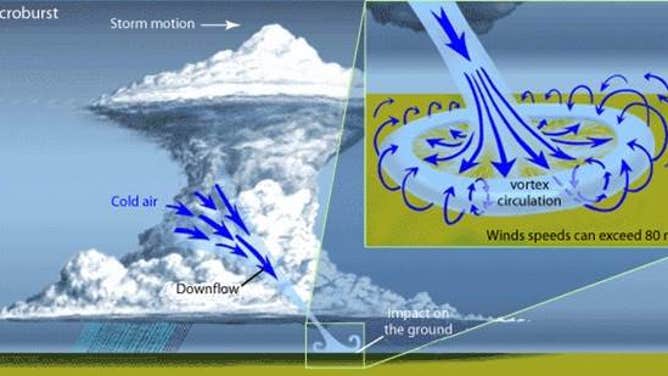
A diagram of a microburst formation
(National Weather Service)
These microbursts, he claimed, were the culprits behind aircraft accidents that led to the deaths of hundreds of airline passengers. Despite being a controversial claim at the time, Fujita’s theory of microburst winds were later accepted and led to the "installation of Doppler radar at airports to improve aviation safety," according to the University of Chicago.
He also became a pioneer in the study of hurricanes and thunderstorms. Plus, he was one of the first to see the potential of satellite imagery and used it to analyze atmospheric motions.
Legacy
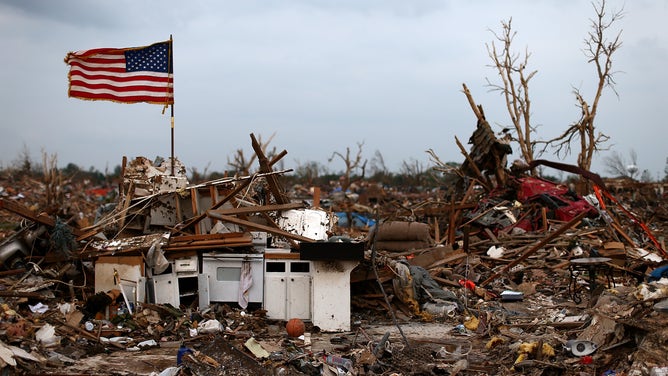
An American flag flies over the rubble of a destroyed neighborhood on May 24, 2013 in Moore, Oklahoma. The tornado of EF5 strength and two miles wide touched down May 20 killing at least 24 people.
(Tom Pennington / Getty Images)
For his work, Fujita earned international recognition: the Order of the Sacred Treasure, Gold and Silver Star from the Government of Japan (1991), the Fujiwara Award from the Meteorological Society of Japan (1990), the Vermeil Gold Medal from the French National Academy of Air and Space (1989), the Applied Meteorology Award from the American Meteorological Society (1988) and NASA’s Public Service Medal (1979), just to name a few — all on top of the first science award he received during grade school in 1939.
Fujita passed away on Nov. 19, 1998, at the age of 78, but his name and contributions to the field of meteorology live on.
